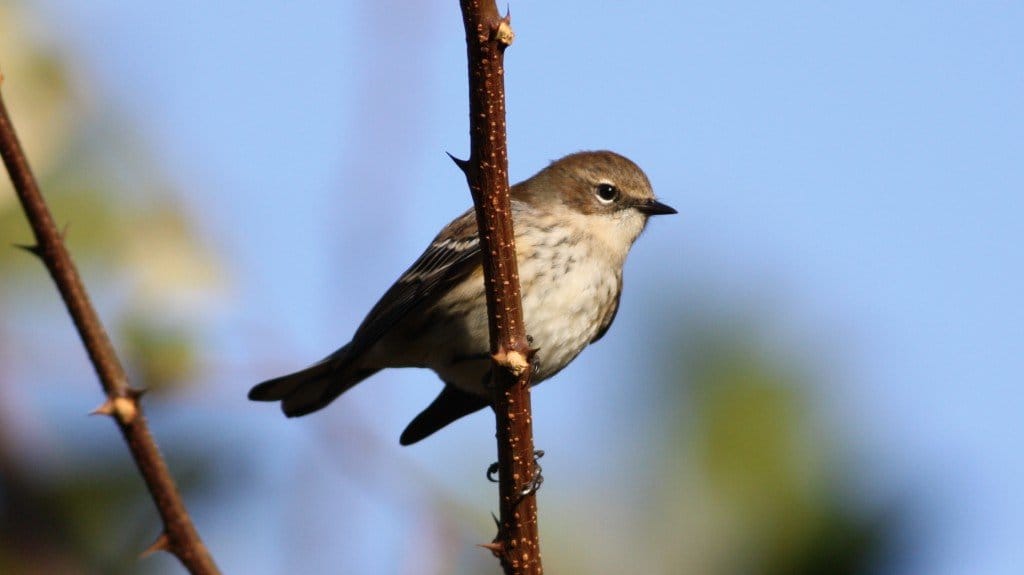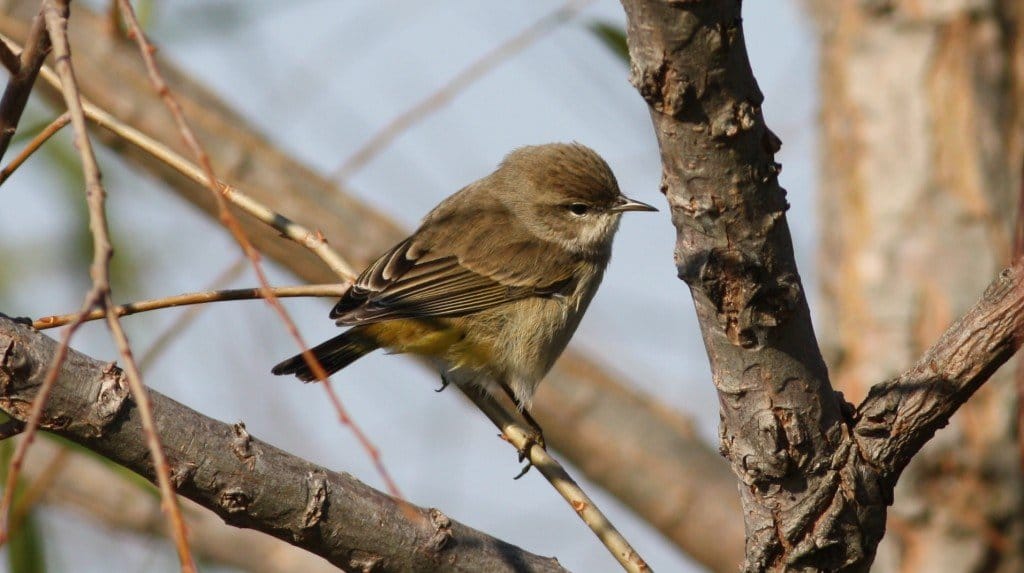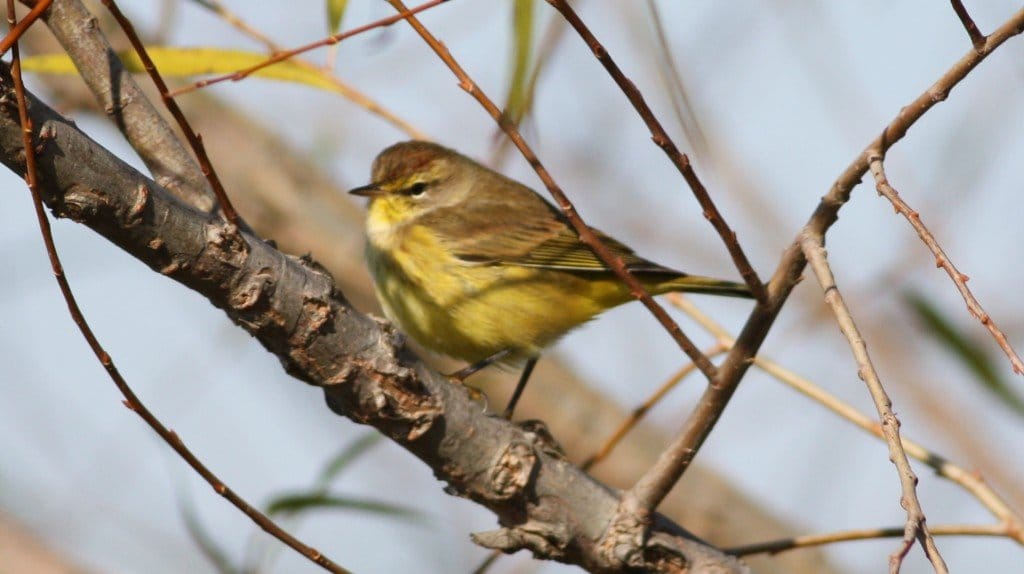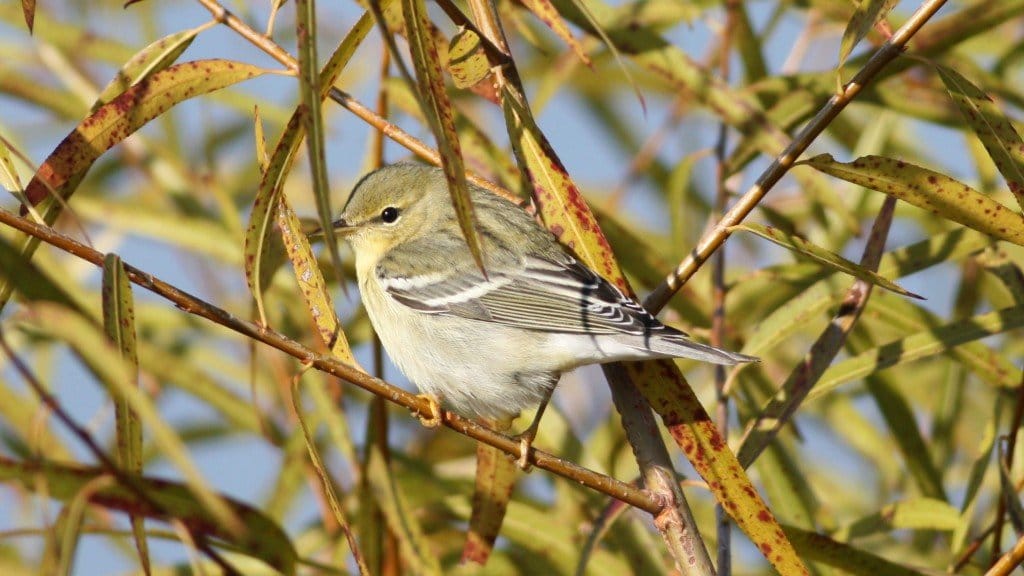I think most of us in North America have come to the somewhat disappointing conclusion that fall migration is pretty much finished for the year. I mean, once the Dark-eyed Juncos start showing up there’s really no denying it, is there? You’re done. You might as well hang it up and learn to enjoy the next five months of kinglets, crows, and creepers. Here in North Carolina, I’ve managed to avoid seeing the dreaded Juncos for the last few days, though their presence has been noted on the local listserv. I figure until I lay eyes on that Junco, fall migration is still on and anything is possible. You hear that, winter? Anything.
But it’s hard to miss the fact that the warblers tend to be lacking in diversity anymore. The flocks that just a fortnight ago held multiple species in varied, if subdued, hues, now overwhelmingly consist of a single species. The hard-checking, tough-as-nails Yellow-rumped Warblers, who will be here until the last northbound migrants chase them back to the boreal forests in May. We get to see a lot of them around here, and familiarity breeds, not contempt certainly, but perhaps apathy. The first Yellow-rumps of the season are always noteworthy, a week later your shooing them out of the way to see the “better” warblers, and before too long they’re all you’re left with. The streaky gray reminder of what was, and what will be again.

But we are not there yet! The late warblers are in full force though, and a trip out to a local park this past weekend put me in the middle of great numbers of Palm Warblers, bobbing drunkenly in the willows near the lake. I flushed several of them, mostly the brown breasted western subspecies, palmarum.

Also in the Palm sort-of-flock, were a couple of these fantastic “Yellow” Pam Warblers, the eastern subspecies hypochrysea, definitely the less common of the two around here. It’s funny, given how common Palms are at the right time of the year, that I almost never see the two populations together. In the spring their period of peak migration is separated by a week or more. Clearly they have no such compunction about heading south together.

And still there are reminders of the great warbler fall that was. Foraging in the willows with the Palm Warblers was true-blue neotropic migrant still slumming it in North America, a Blackpoll Warbler. Look at those bright legs!

We’ve had a pretty exceptional year for Blackpoll Warblers in the Piedmont, as they generally tend to hug the coast pretty closely as they move south down the Outer Banks and make a huge leap from Cape Hatteras nonstop to South America (look at a map, it totally makes sense). Populations of Blackpolls, along with a handful of other highly boreal warblers like Cape May and Tennessee, tend to ebb and flow depending on outbreaks of Spruce Budworm, a small caterpillar known to be a significant conifer pest, and the birds lay more eggs and have greater nesting sucess in years where the budworms are abundant. I hadn’t heard anything either way, but we’ve had abnormally high numbers of all three of those species moving through the area this fall. It seems to me to have been a good budworm year. Have any other birders in the east seen similarly high numbers of boreal warblers this fall?
The fact that they’re present into late October is notable, but I’m not expecting these birds to stay much longer. The Blackpoll will likely split town this week, with the Palms leaving afterwards. Soon, all we’ll be left with till be the little Yellow-rumps. The ultimate lingerer. And then, and only then the Juncos.
Down goes the curtain.













Be happy with what you get! Up here in the north even the kinglets leave. Of course, we can always hope for irruptions of boreal species. We’ve got that going for us. Our bird banders caught two myrtle warblers last week, they were really stragglers.
I was about to say the same thing 😉 Though I’ll admit that it does make it all that much sweeter when spring finally does come around to Minnesota.
Around here we get a few orange-crowned warblers coming to the parks just outside Boston. And today there was a report of a continuing prairie (!!) warbler. It seems we did better with sparrows this fall with a large number of clay-colored and lark sparrows showing up.
Ah, you Minnesotans! The possibilities of finch and owl irruptions would be enough for me to endure a Minnesota winter. Things tend to be pretty slow around here away form the coast.
My lingering warblers for a crossbill!
I did just see some Common Redpolls last weekend, come to think of it 😉
Great post! Your take on Cape May and Blackpoll numbers this fall gives me hope in finding them in Costa Rica. Both are rare vagrants to the country and would be new for my CR list. Tenns on the other hand, are such a ubiquitous warbler during the Costa Rican “winter” that they just might be our junco (we also have a junco sp. but because it never ventures below the treeline, it’s almost not a junco).
“Familiarity breeds apathy”…good one, and too true sometimes. On the west coast our Yellow-rumps came really late this year, which lead to a much more pleasing migration experience.